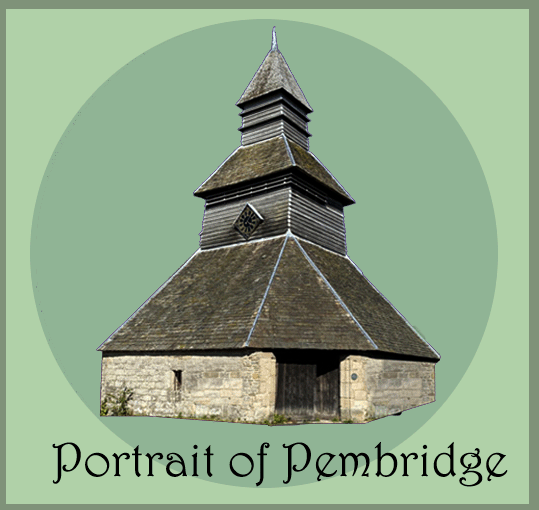D Day 80 -Evacuees in Pembridge
Operation Pied Piper
Given the increasing risk of war in August 1939, the Government decided that schoolchildren, pregnant women, nursing mothers, the elderly and disabled should be evacuated to safer areas to avoid loss of life and injury.
The first evacuees arrived in Pembridge at 11.30pm on 1st September 1939. Fifty-eight children, and their teachers from Tiber Street School, Liverpool . They were fed in the Institute then taken by car to their new homes.
At 12.30 am a party of mothers and infants arrived. A band of helpers looked after them before they were sent to their temporary homes.
A Long Journey
These evacuees were in the first wave, as Britain didn’t declare war on Germany until 3rd September. Over three days, 3.5 million travelled across the country. For many it was the first time away from home. Eileen Potter, an evacuation officer, reported that “many of the children suffered travel sickness and were exhausted at the end of their long journey. “1
These were city children, used to living in well-lit streets. In contrast, Pembridge was dark, accessed by narrow lanes, surrounded by countryside. One evacuee, Henry Mayers, recalls “ a car drove us through the night, rabbits’ eyes blazing in the headlights. I was fascinated. “
Billeting
Parents weren’t forced to send their children away and for many it was hard to do so. Some children saw this as an adventure, especially those who were able to travel in a school group with friends and teachers.
Many country dwellers gladly offered shelter. For those who were reluctant there was no choice. A local billeting officer assessed the capacity of households and decided how many evacuees could be accommodated.
In Pembridge Mrs Bourdillon, the Rector’s wife, was the billeting officer. Hosts were paid at a rate of 10s6d (53p) per week for one child and 8s 6d (43p) per additional child.
School’s Out
The local children were on holiday, so Mr Ayers, the headteacher, lent the school, to Tiber St School. This could only be temporary as it was built for 90 pupils.70 Pembridge children plus 58 from Liverpool and a trickle of private evacuees would soon leave it overcrowded.
In some parts of the country a shift system was adopted, with local children attending one half of the day, and evacuees the other. Herefordshire Local Education Authority decided not to follow this practice.
The solution was to use the Institute, where the Liverpool children would be taught by their teachers, with the Herefordshire children and private evacuees then returning to school.
This had its drawbacks, as it meant Liverpool children from ages 5 to 14, being taught in one room. According to one evacuee, Henry Mayers, most lessons ceased, with pupils being given books to read or plays to perform.
Comings and Goings
During 1939 the threatened air raids on major cities didn’t come about. This period became known as “The Phoney War”. Consequently, some of the evacuees returned home so that by early 1940 33 Liverpool pupils remained.
This all changed in Summer 1940 when air raids on the Southeast and coastal areas prompted a second wave of evacuation.
On 2nd June 1940 69 children from Colegrave School, West Ham, arrived in Pembridge. Accommodation in Pembridge was limited, so 29 children were billeted in Broxwood and added to that school’s roll, while others were sent to Noke Lane and Staunton school, leaving Pembridge with 24 extra pupils.
In addition to the official evacuations, many families made private arrangements. Those wealthy enough rented property in the countryside, while others, with friends or family in safer areas, sent their children there. These children joined the school roll in Pembridge, we’ve identified 29 of them. By mid-1940 there were 131 extra school age children living in the parish.
Kay Ingram
1 We are at War- ( Diaries of Ordinary People in Extraordinary Times) - Simon Garfield (Ebury Press)
The People’s War-Juliet Gardiner ( Collins & Brown)
Evacuees of the Second World War -Mike Brown ( Shire Publications)
Headmaster’s Logbook, Pembridge CE Primary School 1939-41

